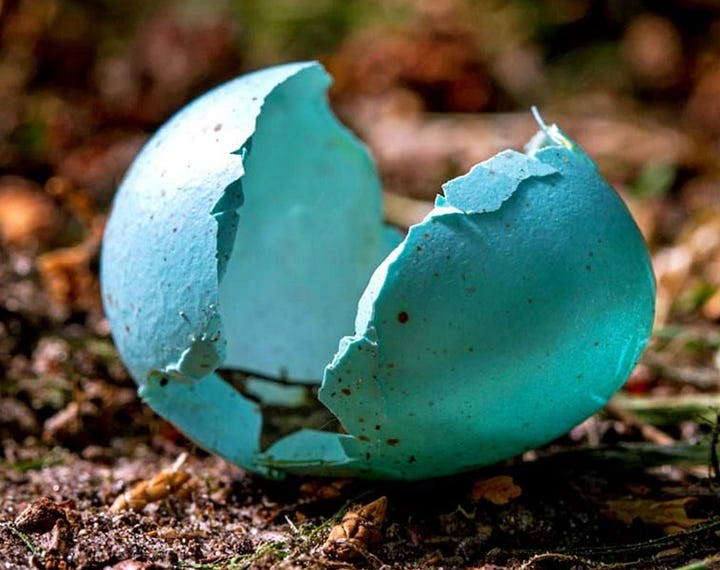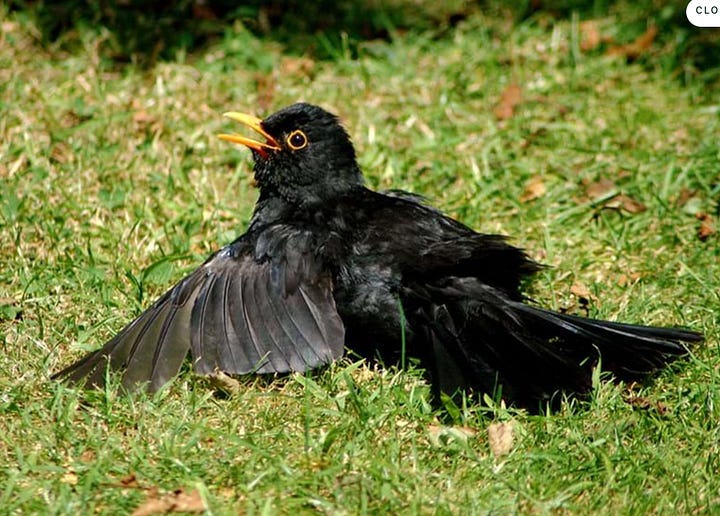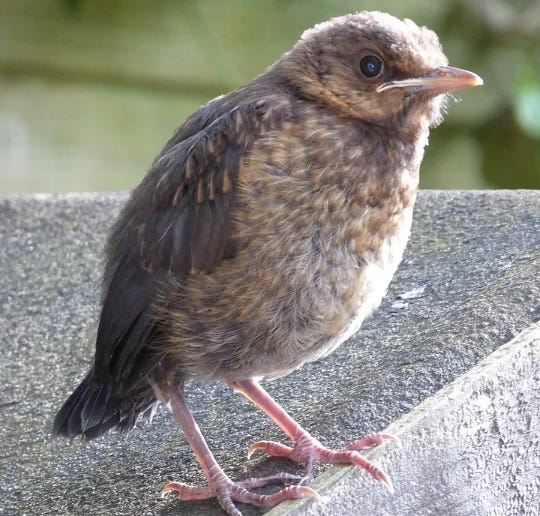We How I love the blackbird!
Its Latin name - Turdus merula, belonging in the Turdidae family (thrush family).
Nostalgic to my childhood and providing the most gorgeous bird song. The male’s orange-lined eye, their comma shaped body and timid nature are all part of the blackbird’s charm.




Native to Europe, North Africa and Western and Central Asia - they have quickly become a well-known, loved UK bird.
Yet, blackbirds are facing a difficult time - their population is in sharp decline, due to a rapidly spreading virus. The virus doesn’t affect humans, a few cases have been reported but it isn’t dangerous and can be managed.
(Bottom right image shows a blackbird openings its wings out to the sun to eradicate parasites which can affect their feathers - such clever little feathery creatures!)
Understanding the blackbirds distinctive features, song, diet, breeding and nesting habits:
Song: Typically a low to high song, with a pause, then a slightly different tune. Each cycle is varied, sort of improvised.
They can also mimic other sounds, and have been known to create mobile phone sounds, skip to 0.38 of video below to hear:
Identification - The male has black glossy feathers, bright yellow-orange beaks and matching orange eye-rings. While the female is brown, with speckled chests, with a similar appearance to thrushes.


Diet - They are ground feeders, their diet varies with the seasons. In spring and summer, eating worms, insects, beetles, caterpillars and in autumn and winter, feasting on berries, fallen fruit and seeds.
Nest building - She builds a neat bowl-shaped cup, comprised of twigs and grass, as well as other vegetation, lined with mud, situated in hedges or climbing plants.
Breeding - She lays 3-5 eggs, incubating them alone, so potentially adding 10-12 blackbirds to the population each year. However, according to binocular-base, they have a high mortality rate of 60-90% so maybe only 1-2 chicks will survive.
The chicks will hatch after two weeks, open their eyes in 4-5 days, taking their first flight after around two weeks, and fed for a little while after, before they can fend for themselves.


Usutu Virus (USUV)
Have you heard of the Usutu virus (USUV)?
It is a fast spreading virus spread via mosquitoes and deadly to the blackbird. It has also been observed in magpies, owls, house sparrows, blue tits and jays however isn’t deadly and some species can recover.
The blackbird appears to be the most vulnerable species to the virus in the UK. It affects their nervous system, liver and spleen, causing disorientation or lethargy, ending in a prompt death.
The virus was first identified in South Africa in 1959, however only started spreading through Europe in the early 2000’s. It was then detected again in Austria in 2001, where it caused mass die-offs of blackbird and since then, it has spread considerably across continental Europe.
The first confirmed case in the UK was in 2020, detected in many blackbird deaths. Since then, there has been an approximate drop in blackbirds by a dramatic 40% since 2020.
Why is the Usutu virus spreading and where did it come from?
It’s been suggested that the virus was spread via migratory birds or via infected mosquitoes blown across the Channel during warm spells.
Climate change is only making this worse, the warmer summers and milder winters allow the mosquito to prosper, breeding more easily.
Usutu Virus Transmission Cycle
The blackbird is both a susceptible host and an amplifier host.
Susceptible host - an organism which can become infected, both showing symptoms or symptomless. The pathogen can enter and replicate in the body. Example: blackbird
Amplifier host - an organism will get infected and multiply the virus to high levels, increasing the diseases ability to spread, infecting vectors like mosquitos. Examples: possibly blackbirds (this is still being studied), magpies, house sparrows, great grey owls as well as horses.
Together these amplifier host birds form an enzootic cycle, a nature transmission loop passing the virus from bird to mosquito and back to bird, helping maintain Usutu virus in wild bird populations.
Dead-end host - An organism can be infected however cannot transmit the virus, but so ending the parasite's or pathogen's life cycle. Example: humans
How can you help the blackbirds:
If you want to help the blackbird, the British Trust for Ornithology (BTO) has a useful article you can read here.
If you’d like to help the blackbird, there are a few things you can do:
Report any dead or sick blackbirds (symptoms: lethargy, disorientation, seizures).
Adopt garden hygiene: cover water butts, remove stagnant water, clean feeders/baths weekly.
Keep wildlife-friendly garden habitats with native plants, ponds, and ground cover.
Generally to enable healthy blackbirds to prosper - leave windfall apples and berries, provide mealworms (soaked if it's dry) and avoid pesticide use.
Thank you again to my subscribers and a small bow to my paid subscribers. I really enjoy both researching and writing these newsletters - I’m really glad you’ve taken the time to read, thank you <3




